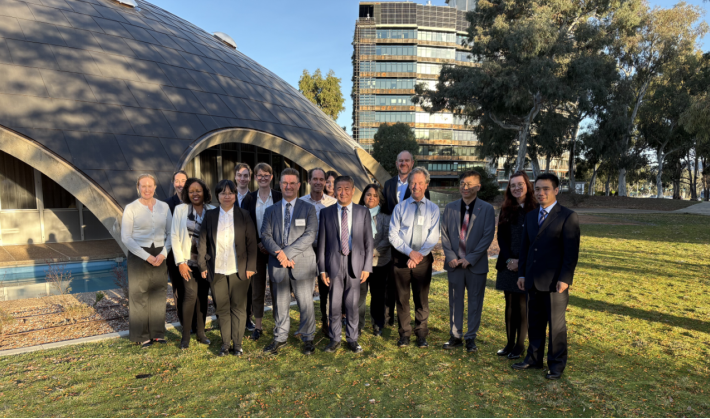IPPCAAS Develops Novel Strategy to Enhance Plant Viral Vector-Mediated Heterologous Protein Expression
Recently, the Crop Virus Disease Monitoring and Control Innovation Team and the Functional Genomics of Crop Pathogens Research Innovation Team at the Institute of Plant Protection, Chinese Academy of Agricultural Sciences (IPPCAAS), in collaboration with the Institute of Food Science and Technology, Chinese Academy of Agricultural Sciences (IFSTCAAS), published a research paper titled Editing of an antiviral host factor boosts plant growth and yield of plant viral vector-mediated heterologous protein expression in Plant Biotechnology Journal . The study demonstrated that CRISPR/Cas9-mediated knockout of the antiviral host factor NbGRP in Nicotiana benthamiana not only promotes plant growth but also significantly enhances the expression levels of heterologous proteins mediated by plant viral vectors, offering a novel approach for efficient protein production in plants.
Compared to mammalian expression systems, plants as bioreactors offer distinct advantages, including higher scalability, lower production costs, reduced risk of human pathogen contamination, and rapid high-level protein expression. Plant viruses are obligate intracellular parasites that have been successfully engineered into protein expression vectors for synthesizing vaccines, monoclonal antibodies, and other target products. However, limitations such as low expression levels caused by antiviral defenses like RNA silencing hinder their broader application. Enhancing target protein yield remains a critical challenge for efficient heterologous protein production using plant viral vectors.
This study identified NbGRP, a glycine-rich cell wall structural protein, as an antiviral factor responsive to tomato brown rugose fruit virus infection. CRISPR/Cas9-mediated knockout of NbGRP promoted the growth of N. benthamiana , resulting in larger leaves and a twofold increase in biomass. The knockout of NbGRP also enhanced the susceptibility of N. benthamiana to other widely used plant viral vectors, such as tobacco mosaic virus (TMV) and potato virus X (PVX), significantly boosting the expression level of green fluorescent protein (GFP) expressed from these viral vectors. Furthermore, NbGRP -knockout plants substantially increased the production of a GFP nanobody.
The findings propose a strategy to elevate target protein yields by selectively knocking out antiviral host factors. Unlike existing technologies that disrupt factors like RDR6 which cause developmental abnormalities, NbGRP knockout did not induce observable defects; instead, it enhanced plant growth, potentially reducing production costs. This breakthrough provides critical insights for efficiently producing vaccines, nanobodies, enzymes, and other target proteins.
Research Assistant Zhu Fang, Ph.D. candidates Xinru Zhao and Min Du from IPPCAAS are co-first authors of the paper. Professor Xiuling Yang and Xueping Zhou from IPPCAAS, and Professor Wei Guo from IFSTCAAS are the corresponding authors. The study was supported by the National Key Research and Development Program of China, the Key Research and Development Program of Ningxia Hui Autonomous Region, and the National Natural Science Foundation of China.

-
 IPPCAAS Experts Visit Australia to Promote In-Depth China–Australia Cooperation in Plant Biosafety
IPPCAAS Experts Visit Australia to Promote In-Depth China–Australia Cooperation in Plant Biosafety -
 IPPCAAS Awarded Special Prize for Technological Invention at the Chinese Institute of Electronics Science and Technology Awards
IPPCAAS Awarded Special Prize for Technological Invention at the Chinese Institute of Electronics Science and Technology Awards -
 China-France cooperation in plant protection was further strengthened
China-France cooperation in plant protection was further strengthened -
 New progress was made for the Lao PDR – China Joint Laboratory for Plant Protection
New progress was made for the Lao PDR – China Joint Laboratory for Plant Protection
